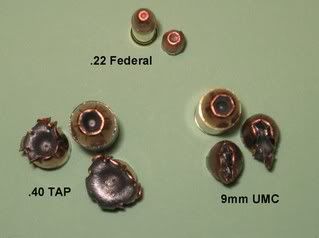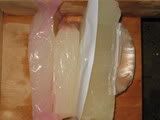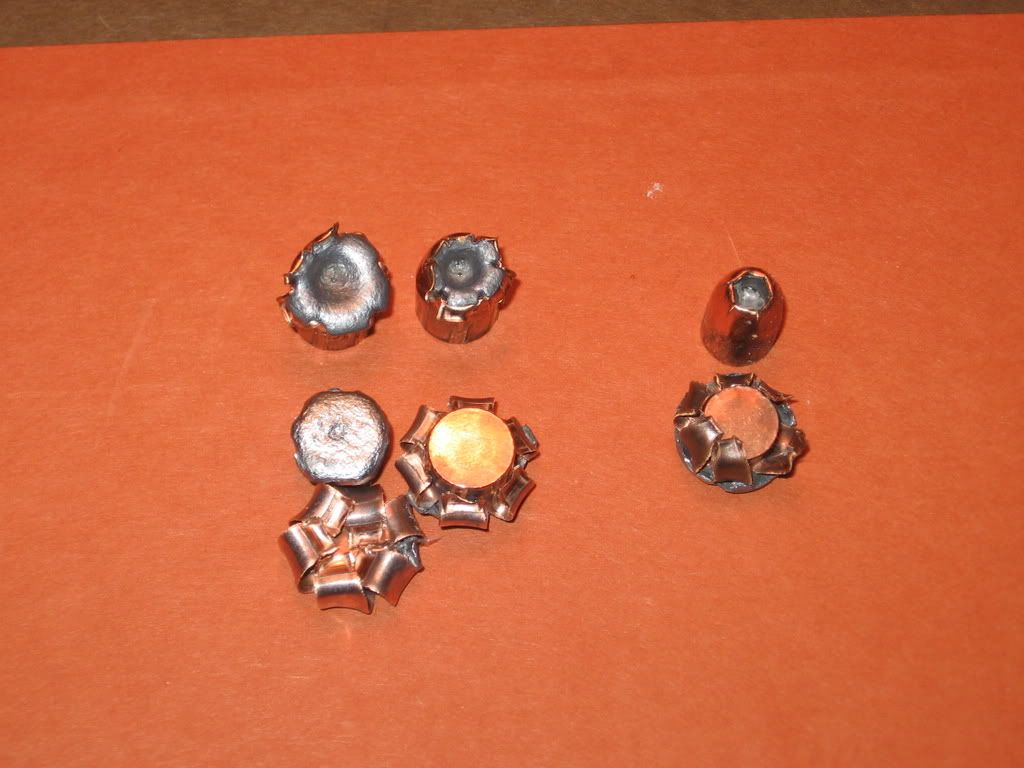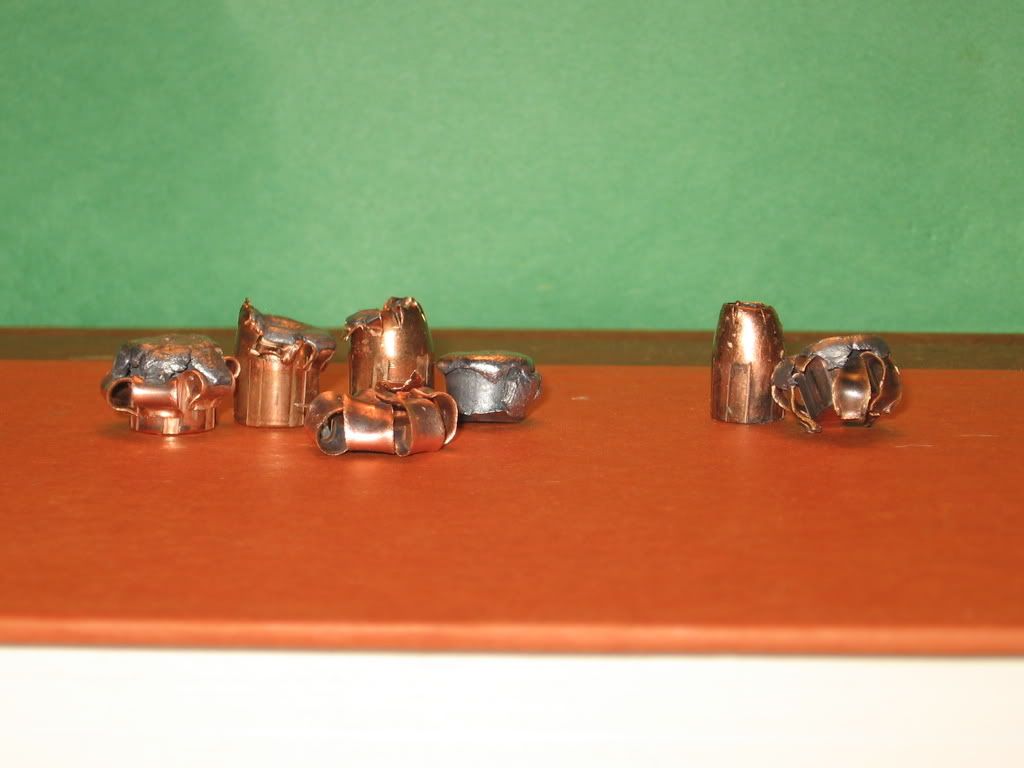EastSideRich
New member
I want to get a bunch of nicely expanded (fully and evenly) jhp bullets (handgun calibers).
In the process I was hoping to do my own little round of ballistics tests, looking at penetration, expansion and consistency between various makes and caliber ammo.
Recently I had the good fortune of getting a hold of what I thought was a very promising material for this, but now I'm wondering if it's not going to work - I have no idea why.
I was able to bring home a 25-30 lb block of an acrylic hot-melt adhesive that was going to go in trash at work. It has fantastic viscoelastic properties and is extremely sticky. This stuff is very tough and rubbery, but will flow given enough time, taking the shape of whatever container it's in (kinda like silly putty, but stiffer). I figured this would be an ideal material for ballistic testing, its toughness and tack limits penetration (for example if you stab it hard with a flat screwdriver you can only get it about an inch or so in), its viscosity allows it to seal up holes, so it's reusable, and it's very homogeneous so it should be excellent for comparing different ammunition.
The limited "testing" I've done with it so far is as follows:
.177 steel bb, 400 fps: sticks to surface.
.177 lead pellet, ~1000 fps: 1-1.5" penetration, decent expansion depending on pellet type.
.22 Federal high velocity hollow point, 36 gr, velocity??, out of 4" bbl revolver: ~4-5" penetration, no expansion.
9mm Remington UMC JHP (can't remember bullet wt), out of 4" bbl passed through ~6" block, no expansion (bullets mangled in backstop)
Heres the one that surprised me most:
.40 Hornady TAP, 155gr, 1180fps (stated on box), out of 3.9" bbl: ~8" penetration, minimal expansion.
All bullets impacted a flat face of the block at a 90 degree angle.
All bullets went perfectly straight through medium, don't appear to have tumbled, and left no cavity other than a path the diameter of the projectile.
Just for fun heres a pic of the results:

Heres my question(s):
What is the best way to get fully expanded bullets without damaging them?
Also, any thoughts as to why my "ballistic gel" isn't performing as expected?
In the process I was hoping to do my own little round of ballistics tests, looking at penetration, expansion and consistency between various makes and caliber ammo.
Recently I had the good fortune of getting a hold of what I thought was a very promising material for this, but now I'm wondering if it's not going to work - I have no idea why.
I was able to bring home a 25-30 lb block of an acrylic hot-melt adhesive that was going to go in trash at work. It has fantastic viscoelastic properties and is extremely sticky. This stuff is very tough and rubbery, but will flow given enough time, taking the shape of whatever container it's in (kinda like silly putty, but stiffer). I figured this would be an ideal material for ballistic testing, its toughness and tack limits penetration (for example if you stab it hard with a flat screwdriver you can only get it about an inch or so in), its viscosity allows it to seal up holes, so it's reusable, and it's very homogeneous so it should be excellent for comparing different ammunition.
The limited "testing" I've done with it so far is as follows:
.177 steel bb, 400 fps: sticks to surface.
.177 lead pellet, ~1000 fps: 1-1.5" penetration, decent expansion depending on pellet type.
.22 Federal high velocity hollow point, 36 gr, velocity??, out of 4" bbl revolver: ~4-5" penetration, no expansion.
9mm Remington UMC JHP (can't remember bullet wt), out of 4" bbl passed through ~6" block, no expansion (bullets mangled in backstop)
Heres the one that surprised me most:
.40 Hornady TAP, 155gr, 1180fps (stated on box), out of 3.9" bbl: ~8" penetration, minimal expansion.
All bullets impacted a flat face of the block at a 90 degree angle.
All bullets went perfectly straight through medium, don't appear to have tumbled, and left no cavity other than a path the diameter of the projectile.
Just for fun heres a pic of the results:

Heres my question(s):
What is the best way to get fully expanded bullets without damaging them?
Also, any thoughts as to why my "ballistic gel" isn't performing as expected?



